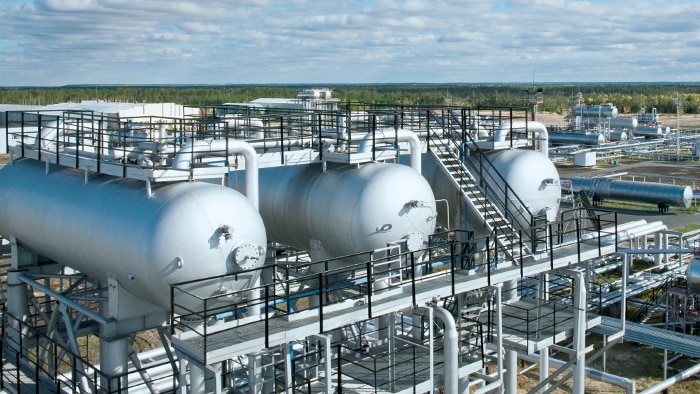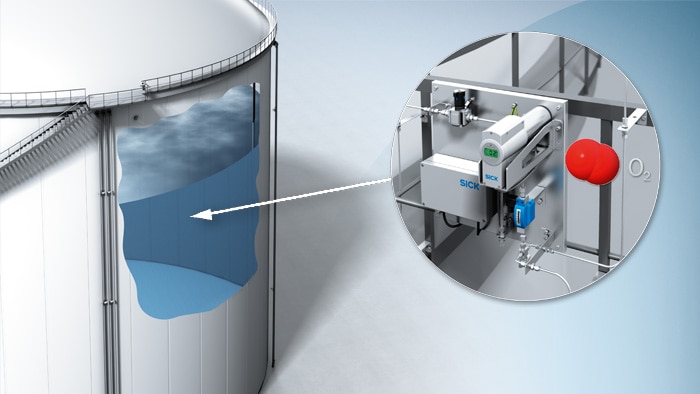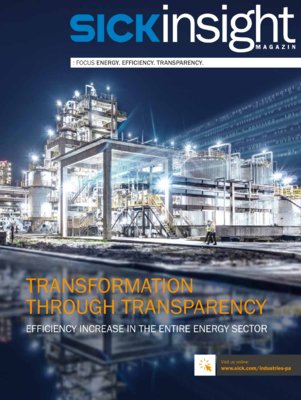TRANSIC Extractive monitors the oxidation process during desulfurization in the MEROX®-Process: The reduction of the sulfur content in fossil fuels such as natural gas and oil is one of the most important environmental requirements for clean air. There are several established processes for removing sulfur components from product flows in refineries and natural gas processing plants. One of the processes for desulfurization used all over the world is the MEROX® process. The right amount of oxygen is essential here – and this is a home game for the reliable and easy-to-integrate gas transmitters from SICK.
Clean exhaust gas thanks to extractive oxygen measurement
Mercaptanes and hydrogen sulfide smell bad – to be honest, they stink to high heaven. Processes in oil refineries or natural gas processing plants which remove mercaptanes or hydrogen sulfide are referred to in general as desulphurization processes (sweetening) since this results in products which no longer exhibit the sour, foul smell of mercaptanes and hydrogen sulfide. The liquefied hydrocarbon disulfides can remain in the processed products or be used for other processes after separation.
Old standards and the same old problems
Paramagnetic O2 analyzers are used by default in many plants all over the world. For many plant operators, the alternative is a weekly analysis in an off-line measurement system in a lab. However, both approaches for oxidation monitoring have considerable weaknesses: After disulfide separation, sampling is a very challenging task. And it is sometimes impossible to keep all contamination away from the analyzer. Paramagnetic O2 analyzers are very sensitive to contamination by oil, moisture and other adhesive materials. If oil penetrates into the measuring chamber, it cannot be cleaned, or only with difficulty, or the entire cell has to be replaced if it was damaged by droplets of liquid. Only with a high level of monitoring and the use of a special filter before the analyzer can penetration of liquid into the measuring chamber be prevented. Both maintenance and repair as well as the replacement of the analyzer, if needed, are extremely costly and lead to lower availability. Due to these problems, many operators choose the alternative of external lab measurement and hence for a more than sub-optimal solution with all its disadvantages such as limited availability, high costs and enormous delay times due to lengthy analyses.
The easy answer from SICK: TRANSIC Extractive
There is an easy answer to ensure better availability even in the demanding MEROX® process: The TRANSIC Extractive from SICK is a rugged analyzer system for extractive oxygen measurement. It uses modern diode laser spectroscopy (TDLS) to very accurately measure the oxygen concentration in the air vent downstream of the disulfide separator. Due to its compact design, the TRANSIC Extractive can be used easily under difficult conditions and in contaminated gases. The TRANSIC is well-protected from oily droplets due to the sample handling in front of the analyzer. Should droplets still reach this point, the integrated TRANSIC sinter Teflon filter prevents penetration into the device measuring path. The reliable and continuous oxygen measurement system delivers results as needed and not only when a laboratory is available.
Explosion protection as a plus
In addition to air regulation in mercaptane oxidization, the oxygen value is used as a safety measurement to prevent the formation of a self-igniting mixture if thermal combustion exists downstream of the exhaust air. To keep the oxygen concentration below five percent by volume, a sufficient amount of fuel gas is added to the vent gas before oxygen measurement in this case. A fire can sometimes only be prevented by ensuring the absence of oxygen. It is precisely this that TRANSIC Extractive reliably monitors.
THE MEROX® PROCESS MEROX is an acronym for mercaptane oxidization and describes the catalytic process developed by UOP which removes mercaptanes from LPG, propane, butanes, light naphthas and kerosene in oil refineries and natural gas processing systems and converts them into liquid hydrocarbon disulfides. In this specific case, a TRANSIC extractive analyzer from SICK is used in a MEROX® unit for light cracked naphtha. |
Read more:
Gas and dust measurement: limiting explosions
More gas for the energy revolution
Measurement principles go head-to-head: Oxygen Technologies do battle
TRANSIC100LP now measures oxygen ATEX-compliant
airprotech gives the green light to oxygen measurement with the TRANSIC151LP





